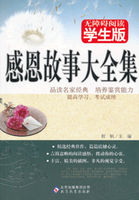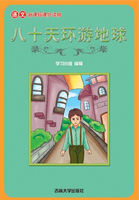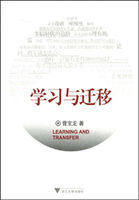On display are the souks. Red dates can be purchased here. They are dry and crunchy, less sweet than the others; the semi-sweet ones have all the shades of orange; the brown and the black ones are very soft, and their sugar seems to dissolve in your mouth.
If the Nile yields simple, raw materials, the inspiration of its people gives rise to one of the most perfumed, flavorsome and colorful cuisine in North Africa. Food in Egypt is hot and spicy, drenched in sauces.
The national dish is fouhl, a fragrant soup of beans which is sold on every street corner.
Egyptians tend to wash down these libations with black tea. Non-Muslims also enjoy the fine local wines and beer, whose origins are actually Egyptian. Ever since the third dynasty drinking it while eating bread was considered a good omen.
What we are seeing is the village near Luxor, which is characterized by the typical houses built with mud and straw.
Some of these houses have been painted with colorful drawings, which are very curious. Aeroplanes, departures, ships and scenes from journeys. These painted walls tell us about the Islamic custom of going on a pilgrimage to Mecca. A duty which should be carried out at least once in a lifetime, an event that is to be passed down to descendants with a vivid fresco.
The population on the Nile has grown at a dizzying rate, giving rise to a great metropolis of the size of Cairo the second most populous city in the world.
To see the swarming crowds in the capital it would seem that the lesson of Ramese II, whose colossal stature is located near Cairo’s Central Station, is still alive in Egypt. Ramses II had more than a hundred children and in Egypt today a baby is born every 20 seconds. The population is very young and half of its 54 million inhabitants are under 20 years old.
The crowds in Cairo, the hustle and bustle of the typical souk, are an unmissable spectacle for people arriving in Egypt, a brilliant contrast to the mysterious charm of the monuments of the Pharaohs. These solemn states are almost participants in modern life. You can almost find your ideas about the Nile reflected in their eyes.
Vocabulary 词汇
flourish ["flauri?] n. 兴旺;茂盛;
vt. 夸耀;挥舞
vi. 繁荣,兴旺;茂盛;活跃
fertile ["f?:tail] adj. 富饶的,肥沃的
n. 肥沃,多产
element ["elim?nt] n. 元素;成分;要素;原理;自然环境
annual ["?nju?l] adj. 年度的;每年的
n. 年刊,年鉴;一年生植物
miraculous [mi"r?kjul?s] adj. 不可思议的,奇迹的
luxuriantly [l?g"?u?ri?ntli] adv. 丰富地;繁茂地
presupposition ["pri:s?p?"zi??n] n. 预想;假定;臆测
souk [su:k] n. (穆斯林国家的)露天剧场
crunchy ["kr?nt?i] adj. 易碎的;发嘎吱嘎吱声的
dissolve [di"z?lv] vt. 使溶解;使液化;使分解
vi. 溶解;解散;消失
perfume [p?"fju:m] n. 香水;香味
vt. 洒香水于……;使……带香味
pilgrimage ["pilɡrimid?] n. 漫游;朝圣之行
vi. 朝拜;漫游
descendant [di"send?nt] n. 后代,晚辈
inhabitant [in"h?bit?nt] n. 居民;居住者
solemn ["s?l?m] adj. 庄严的,严肃的;隆重的,郑重的
Practice
1.The longest river in the world is the .
2.The first great capital of Egypt is .
3.Red dates are dry and , less sweet than the others.
4.Food in Egypt always drenched in .
5.Egyptians often wash down libations with .
6.Now is the capital of Egypt.
译文
世界上最长的河流尼罗河,流经非洲西北部,最终汇入地中海。
伟大的人类文明多发源于河流两岸,但人类历史上最为绚丽、神秘的是始于尼罗河的古埃及文明。
尼罗河谷拥有充足的淡水与阳光,这二者被古埃及人奉为神灵,他们尊称太阳为AMON,称尼罗河为APIS。
孟菲斯是埃及第一个首都,公元前3000年,它建立为独立王国。而若干世纪以前,尼罗河水泛滥,冲垮了古都。
但毕竟,尼罗河所赋予的远大于它索取的。正如古希腊历史学家希罗多德所言:埃及是尼罗河赐予的礼物。
每年洪水过后,土地上都会留下一层淤泥,这是能让庄稼茁壮成长的天然优良肥料。
一个被称作“Nilometer”的设备,是古代法老用来预测一定时期内洪水的可能高度。用于推断丰收与否的“Nilometer”,其实就是制定税收标准的装置。
最具埃及农业特色的无疑是枣椰树。农民用它建房顶,打家具,编篮子。但最重要的是,世上最甜的水果就长在这树上——枣。
红枣就在露天剧场里出售。风干的枣吃起来不太甜,但很脆。半甜的枣呈现出橙色;棕黑色的枣口感很软,它们的糖分仿佛已经溶进了嘴里。
如果尼罗河只提供简单的原料,北非人就会把它们变成美味佳肴。埃及食物多辛辣,并要用酱汁浸透。
FOUHL是当地食品,这种鲜美的豆汤在各个街道都能买到。
埃及人习惯用红茶解酒。非穆斯林也能享用当地美味的葡萄酒和啤酒,其实它们就原产于埃及。早在第三王朝,喝酒吃面包被视为是吉兆。
现在我们见到的是位于卢克索附近的村庄。其标志性房屋是用泥和稻草砌成的。
一些屋外画着彩色的画,有些画很罕见。飞机、离别、轮船以及旅途中的景象,壁画讲述着伊斯兰教徒去麦迦朝圣的习俗。那是教徒一生中至少要履行一次的责任,鲜活的壁画也将代代相传。
现在,尼罗河沿岸人口激增,首都开罗已经是世界人口最多的第2大城市。
看着熙来攘往的人群,仿佛又看到了莱比西斯二世的故事重现。他的塑像早已矗立在开罗中央车站。莱比西斯二世有一百多个孩子,而今天的埃及每20秒就有一个新生命诞生。当地人口年轻化,五千四百万人口中,有一半不满20岁。
喧闹的开罗会给每位来访者留下深刻的印象。而肃穆的法老像似乎也在参与着后人的生活。也许,你能从他的眼中读到关于尼罗河的种种证实。
练习
1.世界上最长的河流是 。
2.埃及第一个首都是 。
3.风干的红枣吃起来不太甜很 。
4.埃及食物多要用 浸透。
5.埃及人习惯用 解酒。
6.埃及现在的首都是 。
1.Nile 2.Memphis 3.crunchy 4.sauces 5.black tea 6.Cairo
08 The History of the Sandwich 三明治的历史
At lunch time, and sometimes at other times in the day, people in the UK often eat a sandwich. This consists of two pieces of bread and a filling. The bread is usually buttered, or spread with mayonnaise, and the filling is usually meat or cheese, often served with lettuce.
However, there are literally hundreds of different types of sandwiches, and each variation has its own flavor. Some of the most popular and famous sandwiches in the UK are: BLT (Bacon, Lettuce and Tomato, usually served with mayonnaise), Ploughman’s (originating from a tradition amongst farm-workers, and containing Cheddar cheese, pickle and salad), Tuna, and Egg sandwiches.
Sandwiches of all varieties are extremely popular, and quick and easy to eat. In fact, British people eat 2.8 billion each year—not bad for a population of only 60 million people! Today everyone eats sandwiches, but it was not always like that. Amazingly, the humble sandwich that we know today started life as a snack for England’s super-rich! The sandwich has a very interesting, and humorous, history!
In 1762 the first written record of the word “sandwich” appeared in the diary of the English author Edward Gibbons, who remembered seeing the wealthiest elite in the country eating “a bit of cold meat” between pieces of bread. Gibbons did not think this was very appropriate behavior for such men!
The snack was named after the Fourth Earl of Sandwich (an Earl was a wealthy aristocrat, who generally owned a lot of land and had political power). Sandwich was a frequent gambler, and was so addicted to gambling that he would often refuse to stop even to eat meals! To avoid having to stop gambling, the Earl of Sandwich asked the cooks at his gambling club to prepare him a meal consisting of beef between two slices of bread, so that he always had one hand free to play cards and gamble, and his hands wouldn’t become dirty from the meat.
When other men saw what he was eating, they began to order “the same as Sandwich!”, and so the sandwich was born—beginning as a snack for some of the wealthiest men in England! It quickly became popular and widespread as a quick and easy food to eat.















